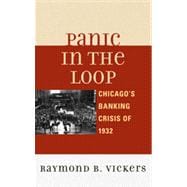
What is included with this book?
| Introduction | p. ix |
| Insiders of Business and Banking: Samuel Insull and Charles Dawes | p. 1 |
| The Fall of Insull | p. 47 |
| Insiders at the Reconstruction Finance Corporation | p. 87 |
| Insider Abuse at the Dawes Bank | p. 139 |
| Dawes Plays His Hand | p. 181 |
| Playing the Young Card | p. 213 |
| The Winners and Losers | p. 239 |
| Conclusion | p. 267 |
| Bibliographical Essay | p. 285 |
| Abbreviations Used in the Notes | p. 303 |
| Select Bibliography | p. 307 |
| Index | p. 329 |
| About the Author | p. 247 |
| Table of Contents provided by Ingram. All Rights Reserved. |
The New copy of this book will include any supplemental materials advertised. Please check the title of the book to determine if it should include any access cards, study guides, lab manuals, CDs, etc.
The Used, Rental and eBook copies of this book are not guaranteed to include any supplemental materials. Typically, only the book itself is included. This is true even if the title states it includes any access cards, study guides, lab manuals, CDs, etc.